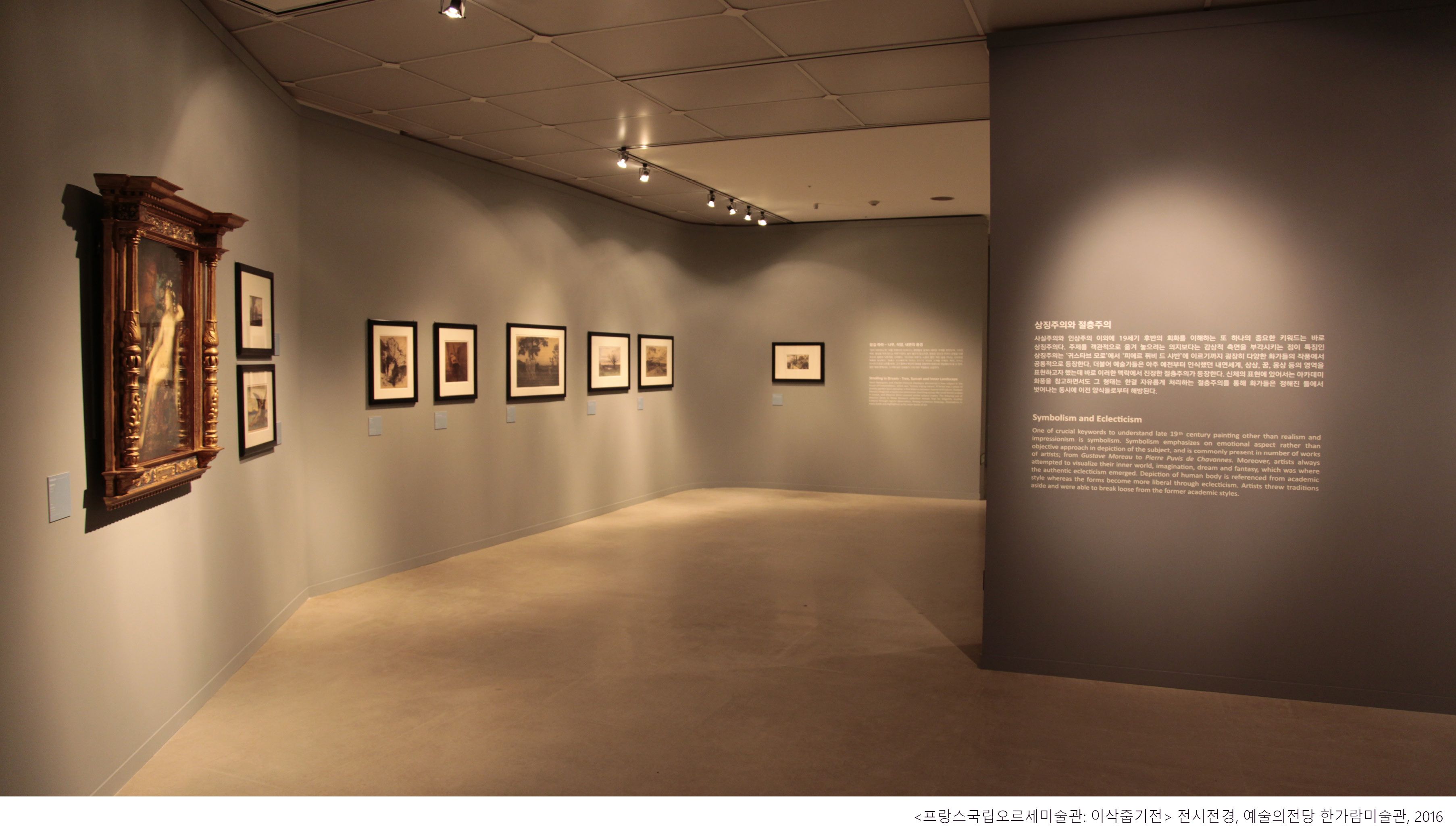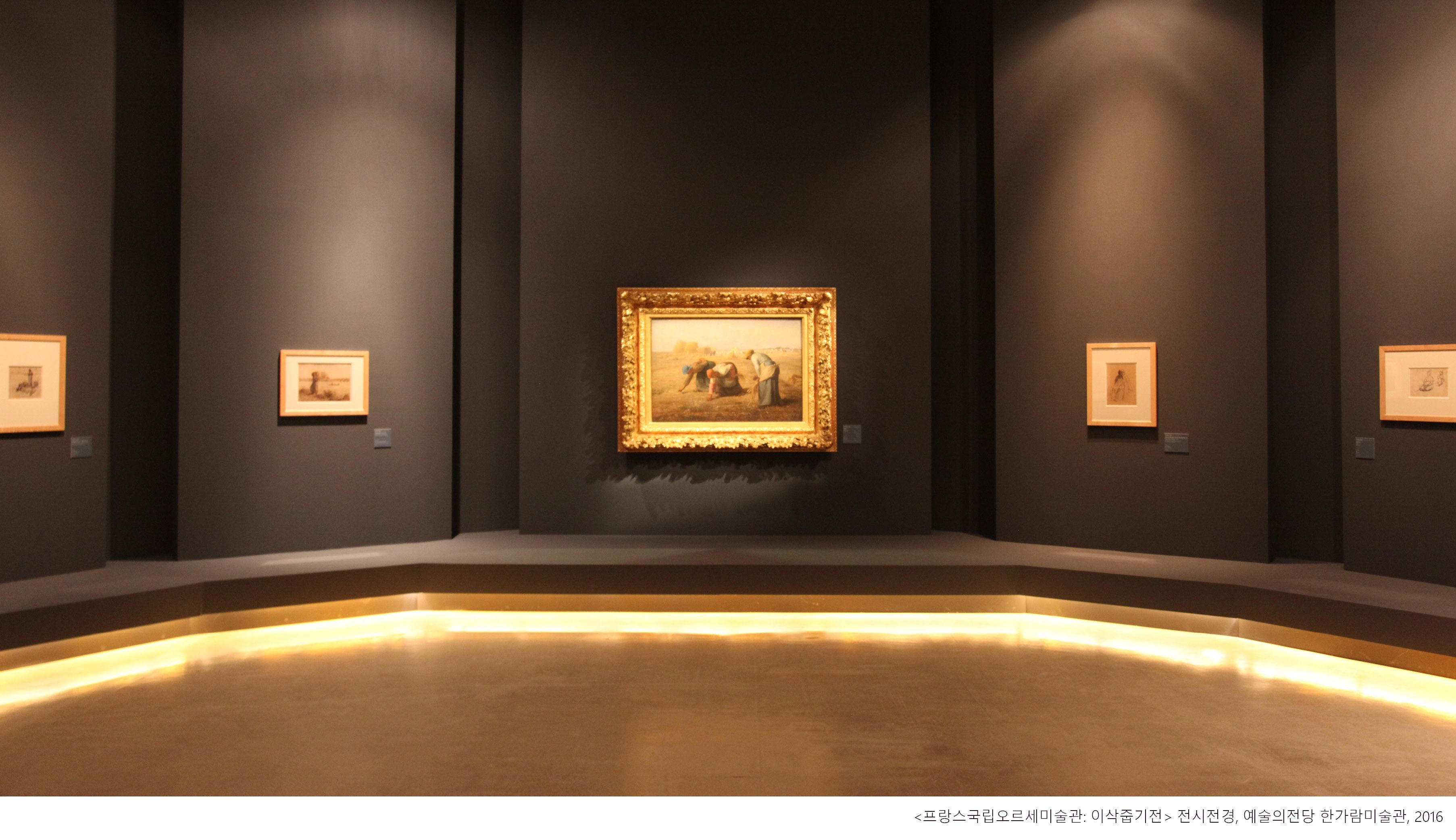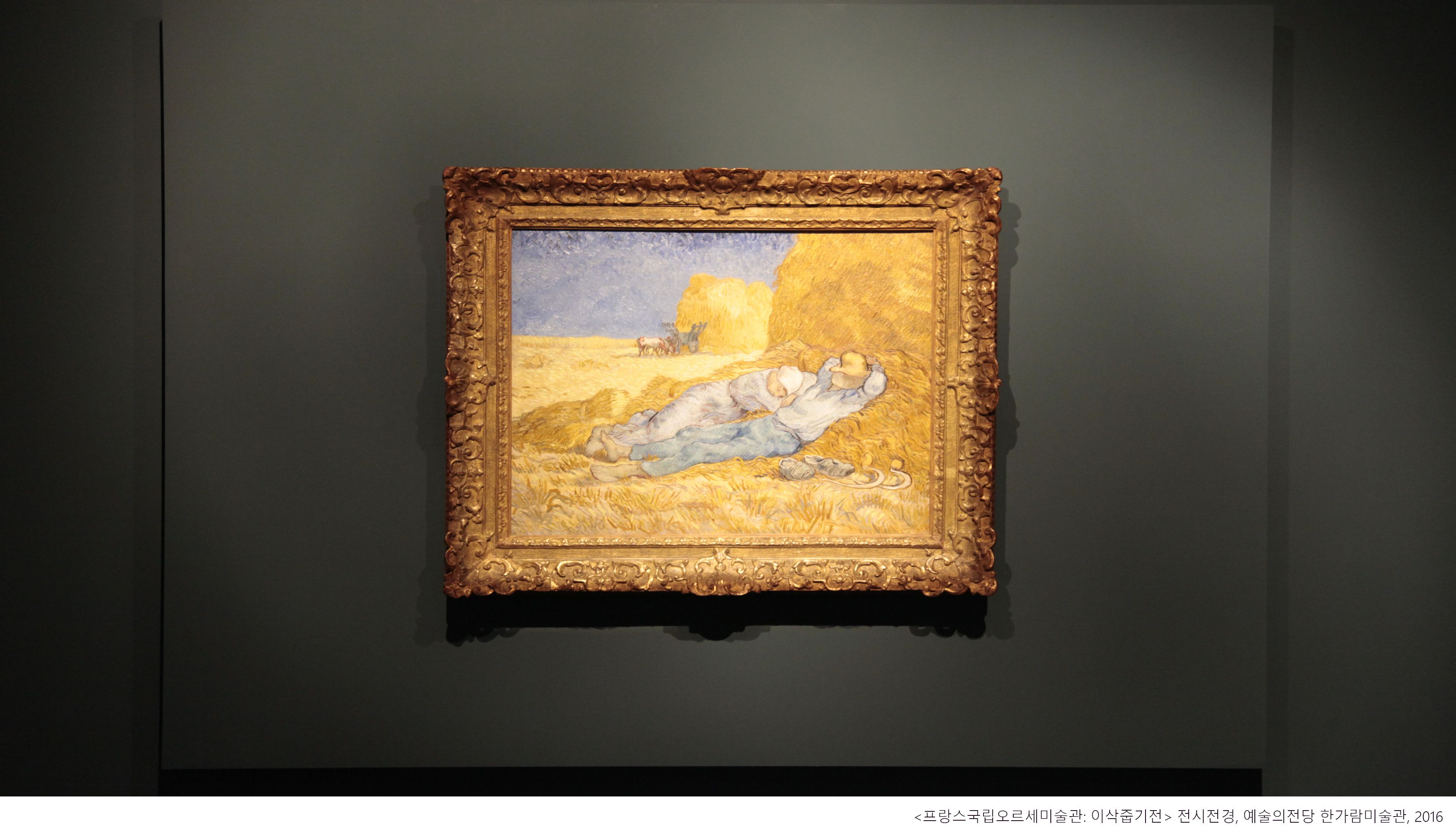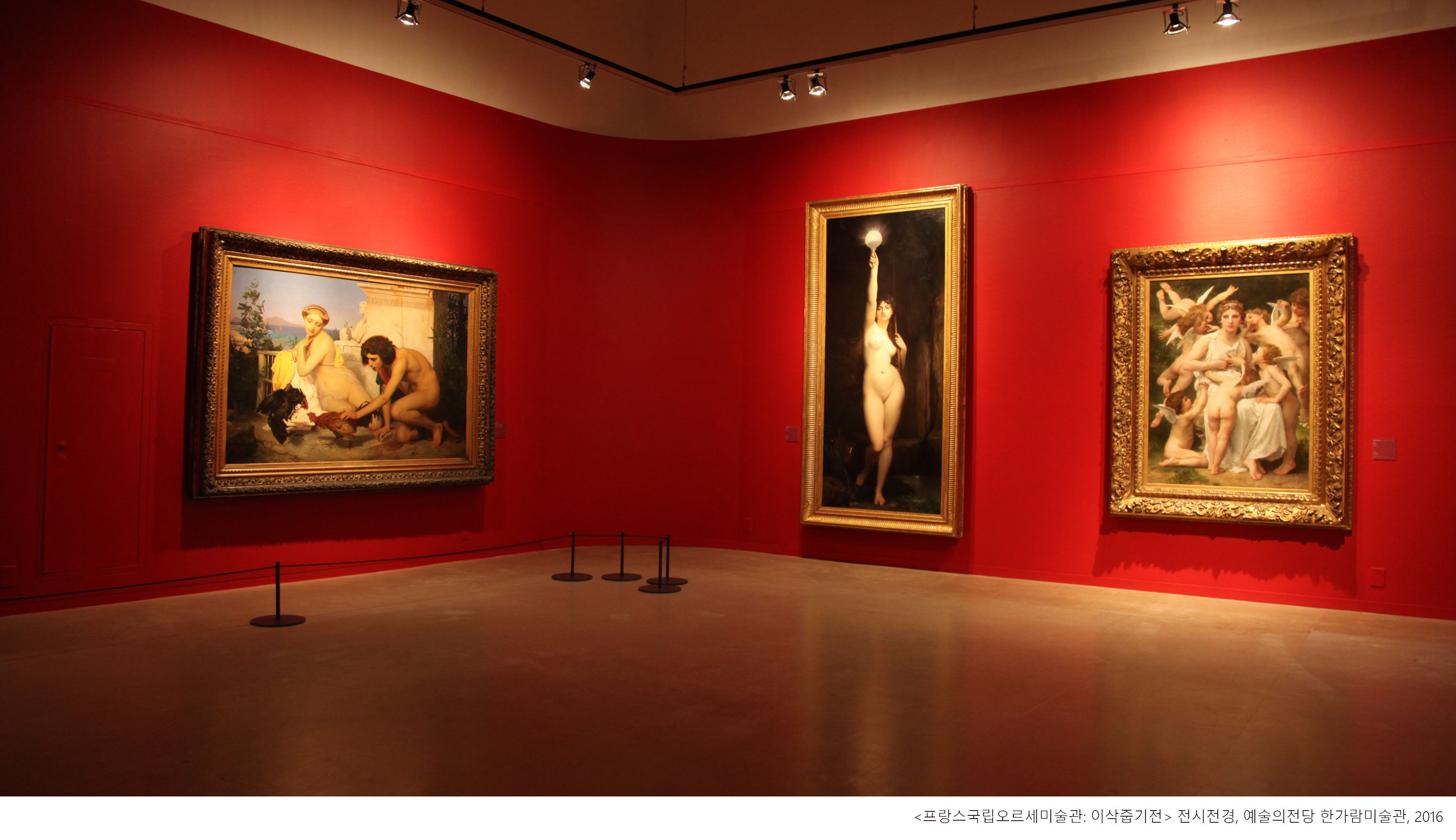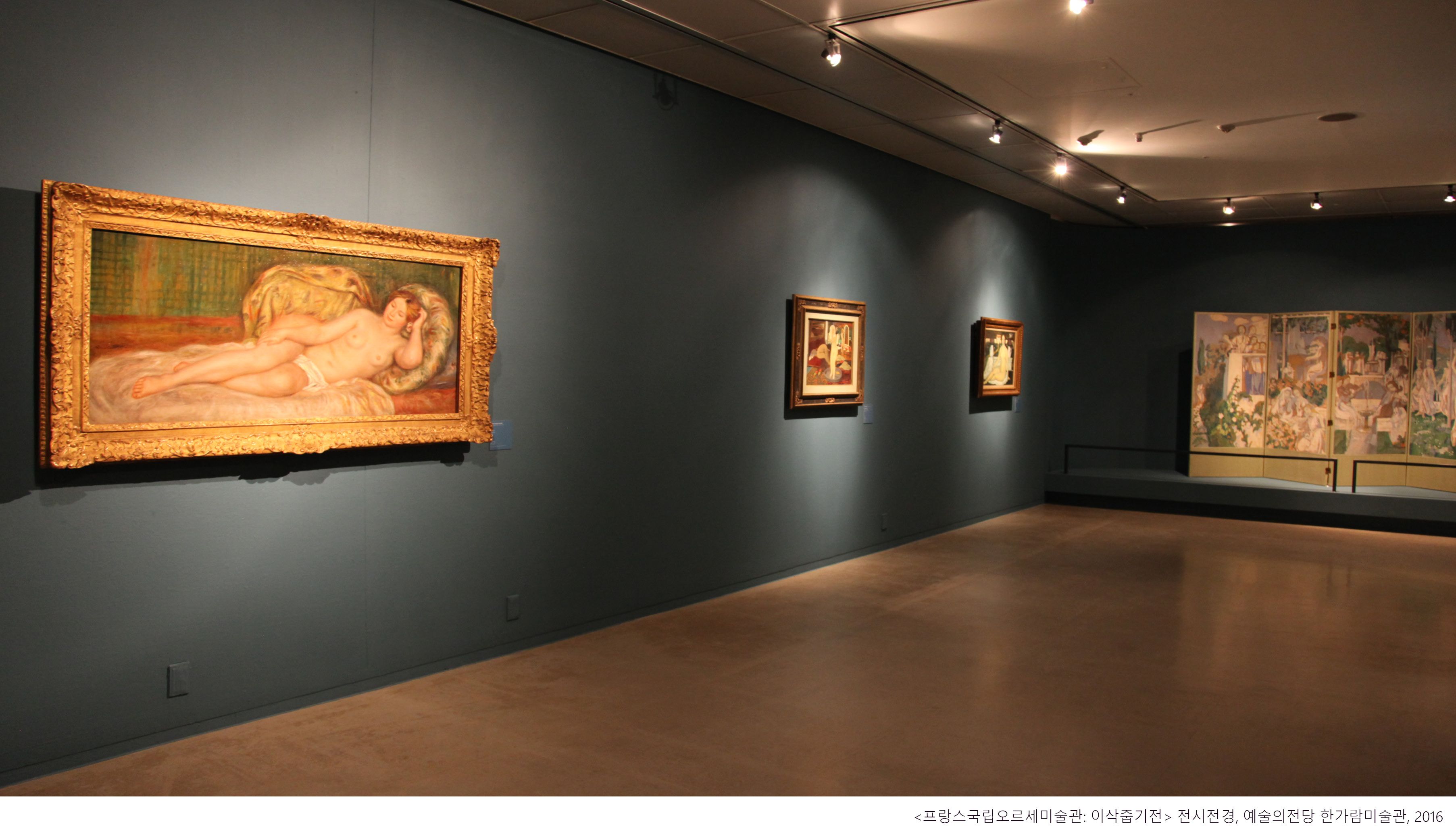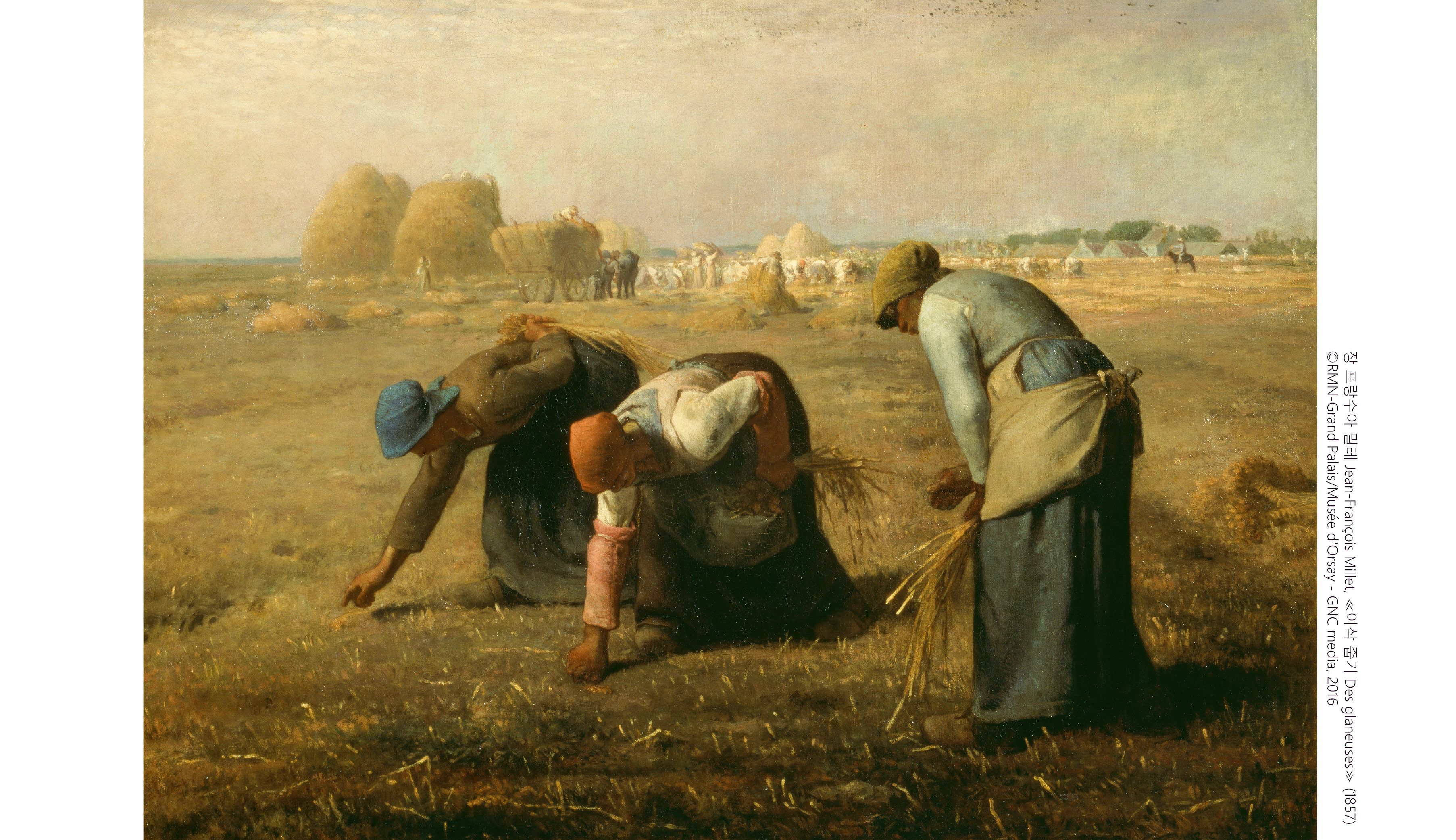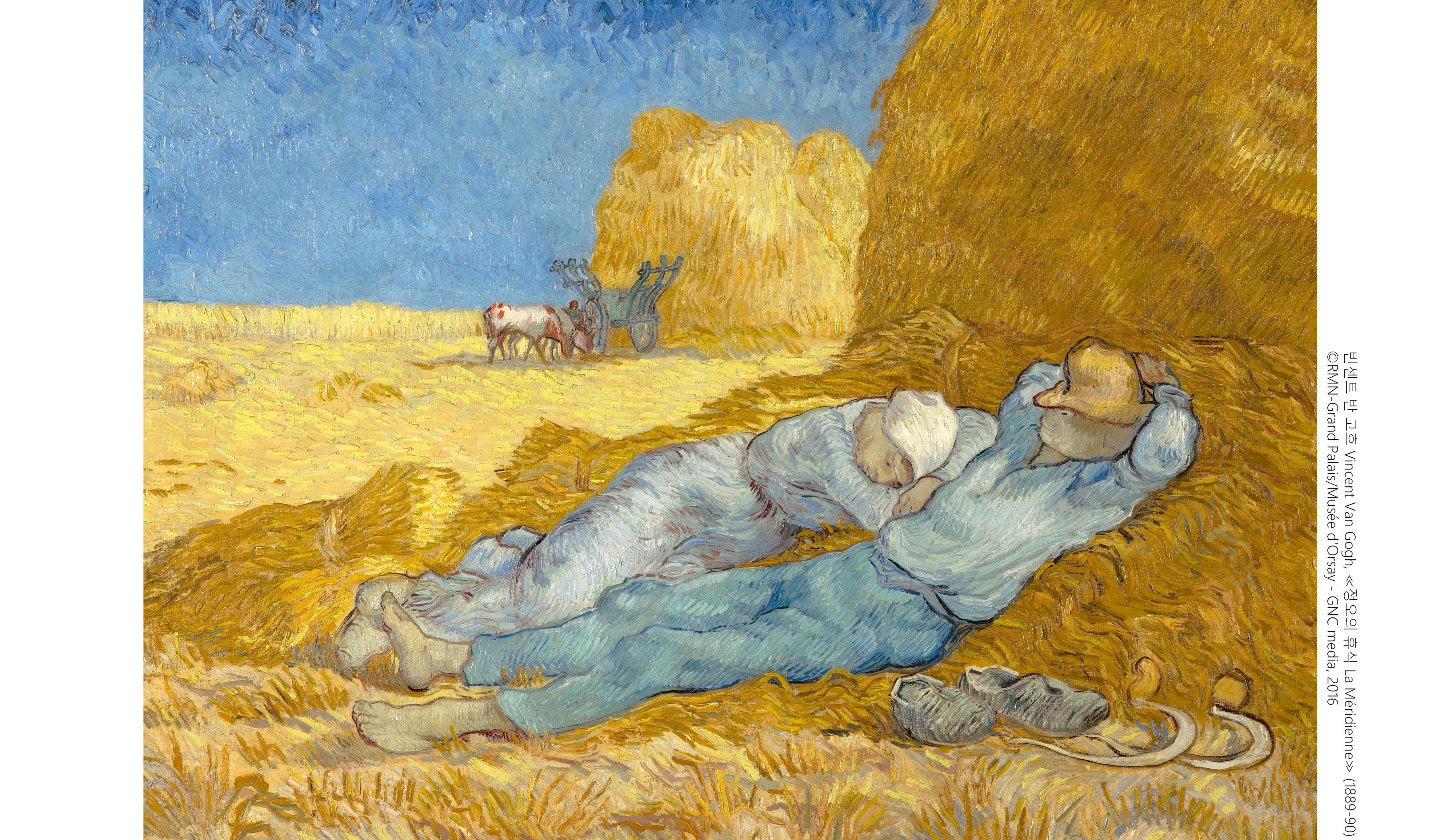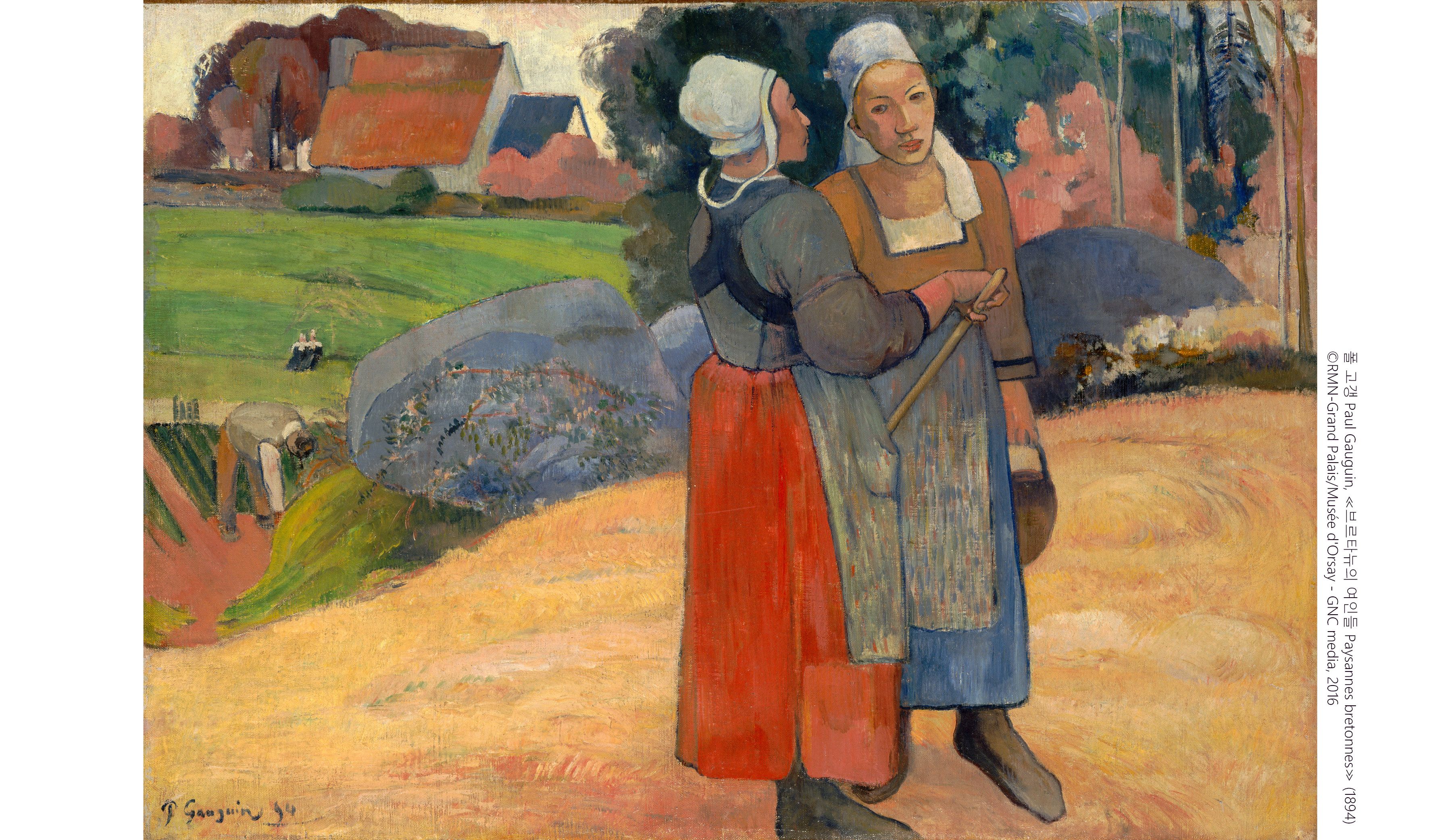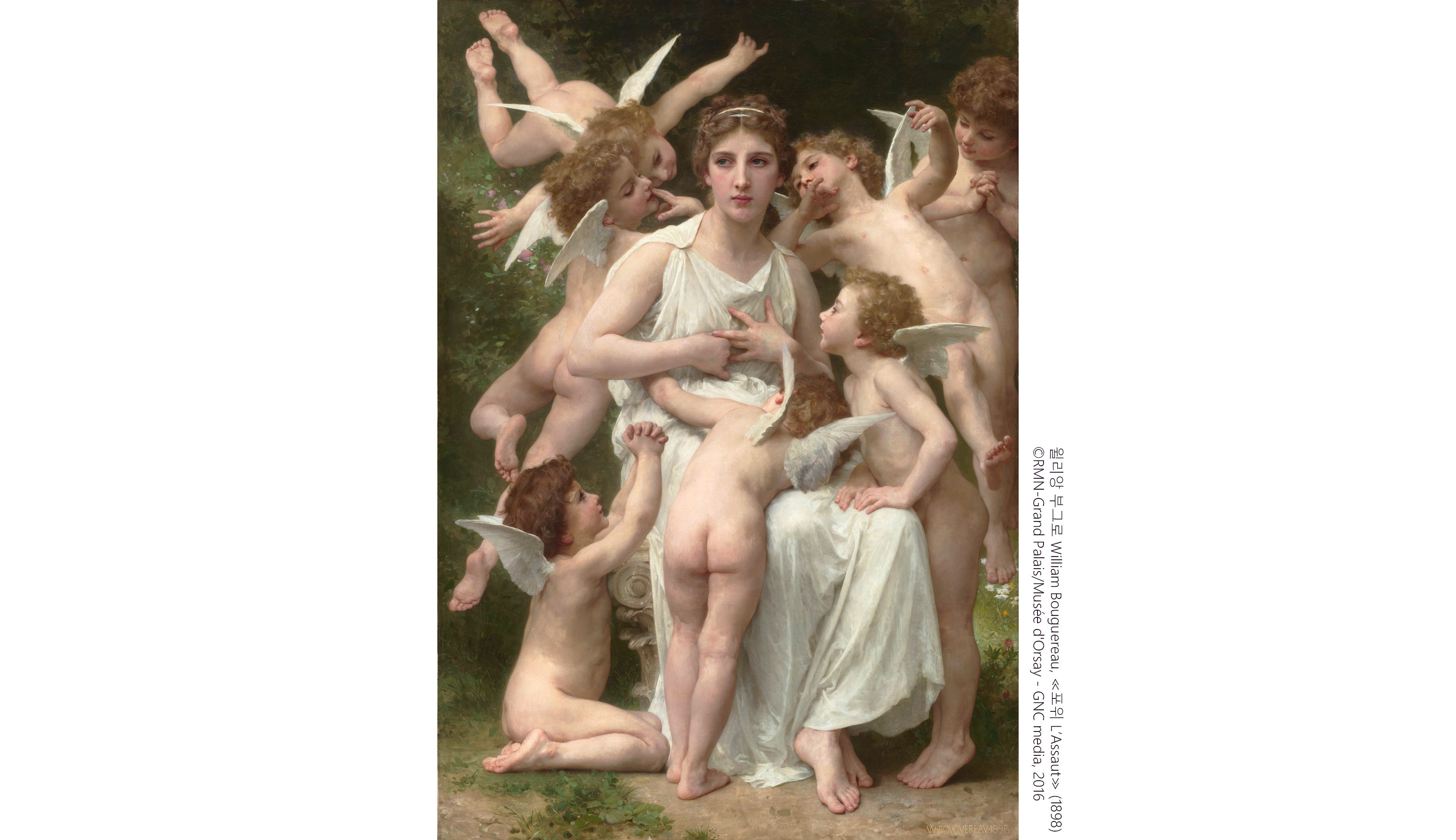Musée d'Orsay
Esthetics in 19th Century
Oct. 29. 2016 - Mar. 5. 2017
Hangaram Museum at Seoul Arts Center
In celebration of the 130th anniversary of the establishment of diplomatic relations between Korea and France, a special exhibition was put together to present masterpieces from the Musée d'Orsay in France. Including the world's favorite paintings such as Jean-François Millet's The Gleaners and Vincent van Gogh's The Siesta, the exhibition showcased about 130 works of art from the 19th century.
The 130th anniversary of diplomatic relations between Seoul and Paris
The Musée d'Orsay Exhibition: Esthetics in 19th Century
The masterpieces from the Musee d'Orsay traveled to Korea to celebrate the 130-year history of the diplomatic relations between Korea and France.
Evidently, many art historians would count the 19th century as the most important period that shaped dynamics in art history. Along with the development of cameras, artists found themselves in different positions from the past and were led to explore and advance the use of paintings. The Musee d'Orsay exhibition in Seoul focuses on those artists' endeavors to depict their new visions on canvases that timelessly touch our hearts till today.
Evidently, many art historians would count the 19th century as the most important period that shaped dynamics in art history. Along with the development of cameras, artists found themselves in different positions from the past and were led to explore and advance the use of paintings. The Musee d'Orsay exhibition in Seoul focuses on those artists' endeavors to depict their new visions on canvases that timelessly touch our hearts till today.
The total of 131 works of art is divided into 5 different sections according to the subjects and styles that they represent.
Exhibition Content
Section 1. Romanticism and Classicism
Eugène Delacroix's strong brushwork represents the iconic signature of Romanticist artists. It is comparable with the Classicists' ideal approach to the subject, the use of colors, and the emotional expression.
Section 2. Academism and Realism
Gustav Courbet usually depicted the ordinary scenes as real as possible. Given that his contemporary artists focused on mythological, historical, or religious subjects, it is important to note Courbet's influence over the next generation of artists.
Section 3. Impressionism and Naturalism
In terms of the expression of air and light, Jean-François Millet was the pathfinder for the general Impressionist artists like Claude Monet, Camille Pissarro, Alfred Sisley, and more. Meanwhile, naturalism also played an important role in navigating new painterly approaches.
Section 4. Symbolism and Eclecticism
Allegorical principles in Symbolism are important guides to appreciate 19th-century paintings. In terms of the physical representation, Eclecticist artists would partially maintain the traditional academic technique while finding somewhat freedom to detour from the old routine.
Section 5. Inspiring 20th Century Art
The important Impressionists cultivated their own unique and unprecedented styles, endlessly inspiring one another. Van Gogh's admiration towards Millet is evidently shown through his paintings such as The Siesta, which is on display in this section.
Information
- Dates
-
Oct. 29. 2016 - Mar. 5. 2017
- Closed on last Mondays of each month
-
- Hours
-
Summer (Mar - Oct) 11:00 - 20:00
- Winter (Nov - Feb) 11:00 - 19: 00
-
- Location
- Hangaram Museum at Seoul Arts Center
- Hosts
- The Musée d'Orsay, Seoul Arts Center, GNC Media
- Supports
- Ministry of Foreign Affairs, Embassy of France, Embassy of France Culture, Ministry of Culture, Sports and Tourism (MCST), The Korea Arts Management Service, the Korean Culture and Information Service (KOCIS)
- Sponsors
- Shinyoung, Lotte Insurance Co., Korean Air, JC Decaux, Shinsegae Chosun Hotel, Seven Eleven
- Media Sponsor
- Naver
- Inquiries
- +82 02 325 1077(8)
- gnc@gncmedia.com
